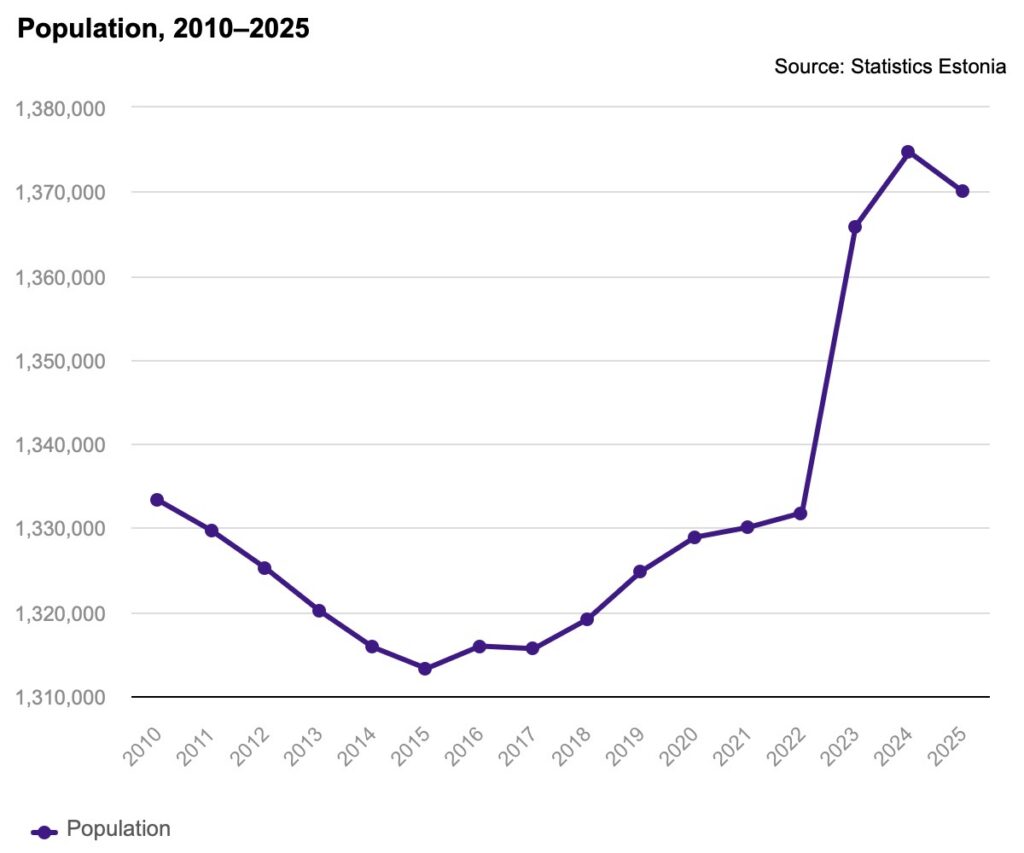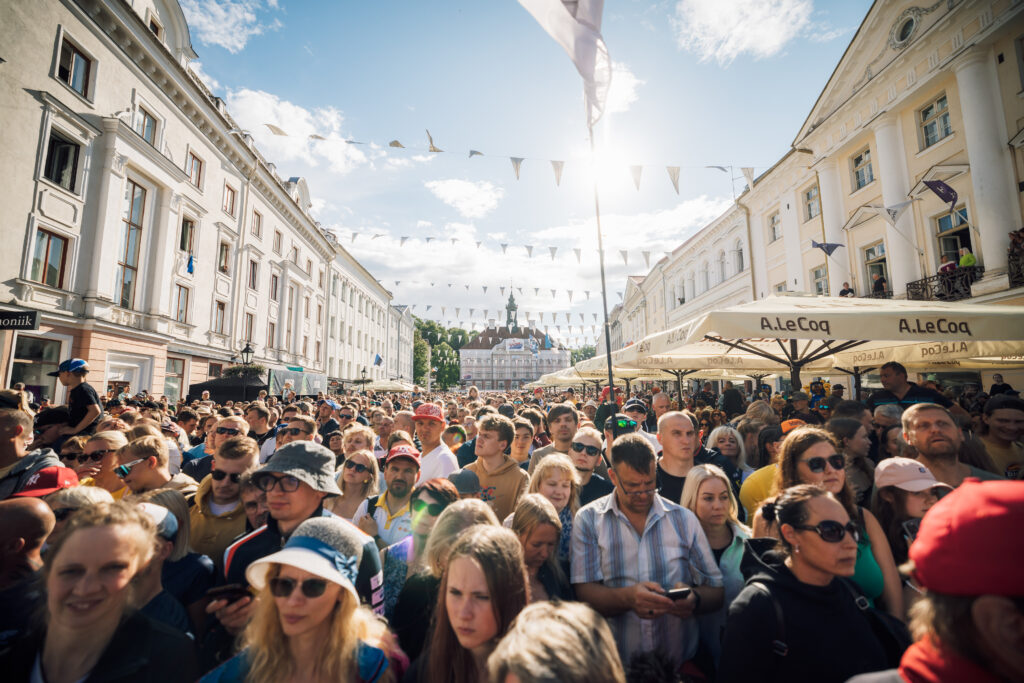Estonia’s population declined by nearly 5,000 in 2024, with the number of births dropping to record lows, according to official data.
Statistics Estonia reported that, as of 1 January 2025, the country’s population stood at 1,369,995 – a decrease driven primarily by a deepening natural decline. In 2024, there were 9,690 births and 15,756 deaths, resulting in a natural population decrease of 6,066.
Although immigration exceeded emigration – with 18,634 people moving to Estonia and 17,260 leaving – the net migration gain of 1,374 was not enough to offset the demographic imbalance.
“The positive net migration could no longer compensate for the growing natural decrease,” said Terje Trasberg, a senior analyst at Statistics Estonia. “As a result, the population declined by almost 5,000 – the first drop since 2016.”

For the first time in the country’s statistical history, which dates back to 1919, annual births fell below 10,000. The 11.5 per cent drop from 2023 – when 10,949 children were born – marked a new low.
The average age of mothers continues to rise, reaching 28.9 years for first-time births – more than two years older than a decade ago, though still one year below the EU average.
Migration slows amid shifting trends
The number of deaths, at 15,800, remained stable compared with 2023 and pre-pandemic levels. However, the decline in births has accelerated for a third consecutive year.
Net migration was the lowest since 2016. Trasberg noted that immigration levels were comparable to those before the COVID-19 pandemic and Russia’s invasion of Ukraine, but emigration had surged – partly due to Ukrainians leaving the country. Emigration in 2024 exceeded the ten-year average by some 5,000 people.
A total of 5,218 Estonian citizens returned home, while 6,472 left – a net loss of 1,254. Meanwhile, 7,013 Ukrainian citizens arrived (down from 13,082 in 2023 and 33,217 in 2022), and 3,829 departed.
“Immigration of Ukrainian citizens halved compared to the previous year, and was nearly five times lower than in 2022,” Trasberg said. “At the same time, their emigration rose. Russian immigration also declined significantly, and for the first time in two decades, net migration among Russian citizens turned negative.”

Four fifths of the population are Estonian citizens
Estonian citizens make up 82 per cent (1.12 million) of the population, with 6 per cent holding Russian citizenship, 5 per cent Ukrainian, 4 per cent undetermined and 3 per cent other.
The number of people identifying as ethnically Estonian rose by nearly 3,000 to 935,000 – or 68 per cent of the total population. The ethnic Russian population, by contrast, declined by more than 10,000.
Estonian is the native language of 65 per cent of the population. Among Estonian citizens, 83 per cent identify as ethnic Estonians and 79 per cent speak the national language as their mother tongue.

